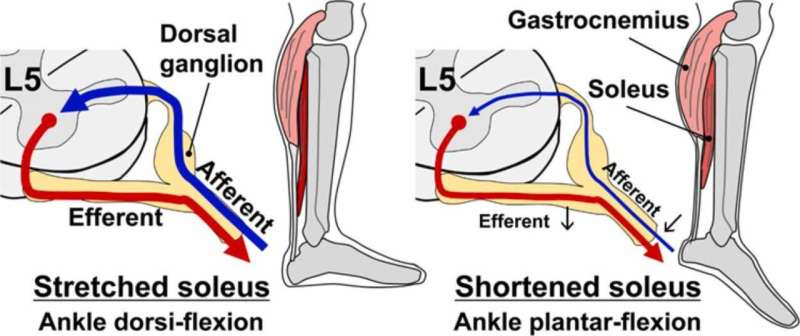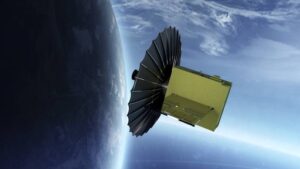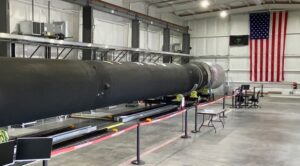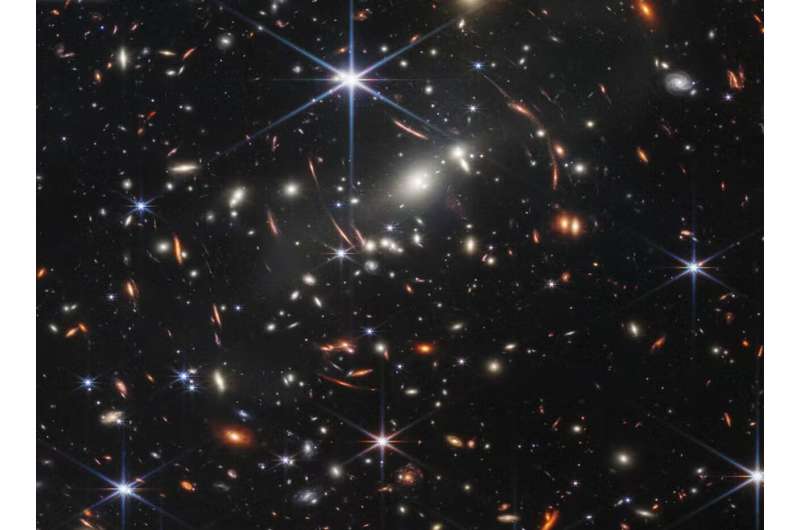How reduced gravity affects astronauts' muscles and nerve responses
Monday, 18 July 2022 13:22
Among the many functions performed by skeletal muscles, an important one is maintaining our posture. If it weren't for these muscles, Earth's gravitational pull may make it difficult for us to stand and walk around. The group of muscles—mostly present in our limbs, back, and neck—which are responsible for maintaining our posture and allowing us to move against the force of gravity are rightly called "anti-gravity" muscles.
But what happens to these muscles when there is no gravity (or an "unloading" of gravitational force) for them to work against? The question might sound ridiculous to some, but not to an astronaut aboard the International Space Station (ISS). In outer space, where gravity is minimal, our muscles (especially the anti-gravitational ones) are not used as much, which might result in their atrophy and changes to their structure and properties. In fact, human calf muscles are known to reduce in volume during a flight in space.
The secrets of Jupiter
Monday, 18 July 2022 12:40 Video:
00:00:55
Video:
00:00:55
Discover the top five mysteries that ESA’s Jupiter Icy Moons Explorer (Juice) mission will solve.
Jupiter, its magnetic environment, and its moons form one of the most intriguing systems in the Solar System. Juice, planned for launch in 2023 and arrival at Jupiter in 2031, will reveal more about this fascinating planet and its natural satellites.
US-UK special relationship deepens in space
Monday, 18 July 2022 12:00
U.S. and U.K. space officials are discussing steps to strengthen their partnership. It's a conversation that has gained momentum in recent month due to concerns that satellites are becoming military targets.
The post US-UK special relationship deepens in space appeared first on SpaceNews.
Multi-domain operations: Helping militaries make better decisions faster
Monday, 18 July 2022 09:58 For years, Paul Meyer's job in the U.S. Air Force was to suppress enemy air defenses. To do that, he had to know where they were and what they were doing. And to do that, he and the pilot of his F-4 Phantom II had to get close enough to show up on their radars.
"My job was to play chicken - to put myself in that environment where I have to fire my missile before he fires his," said Meyer,
For years, Paul Meyer's job in the U.S. Air Force was to suppress enemy air defenses. To do that, he had to know where they were and what they were doing. And to do that, he and the pilot of his F-4 Phantom II had to get close enough to show up on their radars.
"My job was to play chicken - to put myself in that environment where I have to fire my missile before he fires his," said Meyer, New satellite series adds capabilities to China's data relay capacity
Monday, 18 July 2022 09:58 China launched a Tianlian II series satellite early on Wednesday morning to form a global-covering network of the country's second-generation relay satellites.
A Long March 3B carrier rocket blasted off at 12:30 am at the Xichang Satellite Launch Center in southwestern China's Sichuan province and then placed the Tianlian II-03 satellite into a geostationary orbit, according to China Aeros
China launched a Tianlian II series satellite early on Wednesday morning to form a global-covering network of the country's second-generation relay satellites.
A Long March 3B carrier rocket blasted off at 12:30 am at the Xichang Satellite Launch Center in southwestern China's Sichuan province and then placed the Tianlian II-03 satellite into a geostationary orbit, according to China Aeros MDA awarded contract by York Space Systems
Monday, 18 July 2022 09:58 has been awarded a contract from York Space Systems. The contract will see MDA design and build Ka-Band steerable antennas for satellites to be produced by York Space Systems.
"We're excited to establish this new relationship for satellite systems with York Space Systems to support important space security and communications constellations," said Mike Greenley, CEO of MDA. "This contract r
has been awarded a contract from York Space Systems. The contract will see MDA design and build Ka-Band steerable antennas for satellites to be produced by York Space Systems.
"We're excited to establish this new relationship for satellite systems with York Space Systems to support important space security and communications constellations," said Mike Greenley, CEO of MDA. "This contract r Space Systems Command awards GPS support contract to Lockheed Martin
Monday, 18 July 2022 09:58 Space Systems Command awarded Lockheed Martin Space Systems Company the contract to deliver operations and sustainment support services for the Global Positioning System IIR/IIR-M/III/IIIF. The support contract provides specialized sustainment services to maintain the GPS IIR/IIR-M/III/IIIF space vehicles and signal in space, and meet evolving requirements for a resilient system for the joint wa
Space Systems Command awarded Lockheed Martin Space Systems Company the contract to deliver operations and sustainment support services for the Global Positioning System IIR/IIR-M/III/IIIF. The support contract provides specialized sustainment services to maintain the GPS IIR/IIR-M/III/IIIF space vehicles and signal in space, and meet evolving requirements for a resilient system for the joint wa SKYNET 6A satellite passes Critical Design Review
Monday, 18 July 2022 09:58 Airbus has achieved a key milestone with the successful completion of the Critical Design Review (CDR) of the UK Ministry of Defence's (MOD) next secure military communications satellite, SKYNET 6A.
Richard Franklin, Managing Director of Airbus Defence and Space UK said: "Achieving this crucial milestone is tangible proof that in partnership with Defence Digital in the Ministry of Defence
Airbus has achieved a key milestone with the successful completion of the Critical Design Review (CDR) of the UK Ministry of Defence's (MOD) next secure military communications satellite, SKYNET 6A.
Richard Franklin, Managing Director of Airbus Defence and Space UK said: "Achieving this crucial milestone is tangible proof that in partnership with Defence Digital in the Ministry of Defence Rocket Lab supports significant milestone for DARPA and SDA for Mandrake-2 Mission
Monday, 18 July 2022 09:58 Rocket Lab USA, Inc. (Nasdaq: RKLB) has supported a significant milestone for Defense Advanced Research Projects Agency (DARPA) and the Space Development Agency's (SDA) Mandrake-2 mission.
In June, the two Mandrake-2 spacecraft, Able and Baker, successfully demonstrated closing and maintaining an optical communications link for the full test duration of 40 minutes at a range of 114 km. In
Rocket Lab USA, Inc. (Nasdaq: RKLB) has supported a significant milestone for Defense Advanced Research Projects Agency (DARPA) and the Space Development Agency's (SDA) Mandrake-2 mission.
In June, the two Mandrake-2 spacecraft, Able and Baker, successfully demonstrated closing and maintaining an optical communications link for the full test duration of 40 minutes at a range of 114 km. In Rocket Lab launches first of 2 Responsive Space Missions for NRO
Monday, 18 July 2022 09:58 Rocket Lab USA, Inc (Nasdaq: RKLB) has launched the first of two responsive space missions for the National Reconnaissance Office (NRO). Following lift-off of NROL-162 ("Wise One Looks Ahead") from Pad A at Rocket Lab Launch Complex 1 at 06:30 UTC, July 13, 2022, Electron successfully delivered the NRO's national security payload to space.
In partnership with the Australian Department of D
Rocket Lab USA, Inc (Nasdaq: RKLB) has launched the first of two responsive space missions for the National Reconnaissance Office (NRO). Following lift-off of NROL-162 ("Wise One Looks Ahead") from Pad A at Rocket Lab Launch Complex 1 at 06:30 UTC, July 13, 2022, Electron successfully delivered the NRO's national security payload to space.
In partnership with the Australian Department of D Third Tianlian II-series satellite launched
Monday, 18 July 2022 09:58 China launched a Tianlian II-series satellite early on Wednesday morning to form a global network of the country's second-generation relay satellites.
A Long March 3B carrier rocket blasted off at 12:29 am from the Xichang Satellite Launch Center in southwestern China's Sichuan province and then placed the Tianlian II-03 satellite into a geostationary orbit, according to China Aerospace Sc
China launched a Tianlian II-series satellite early on Wednesday morning to form a global network of the country's second-generation relay satellites.
A Long March 3B carrier rocket blasted off at 12:29 am from the Xichang Satellite Launch Center in southwestern China's Sichuan province and then placed the Tianlian II-03 satellite into a geostationary orbit, according to China Aerospace Sc UAE announces plans for radar satellite constellation and space fund
Monday, 18 July 2022 09:54
The United Arab Emirates will develop a radar satellite constellation as part of a new fund worth more than $800 million to support the country’s space sector.
The post UAE announces plans for radar satellite constellation and space fund appeared first on SpaceNews.
Op-ed | Don’t Let Recession Fears Threaten Space Sustainability Gains
Monday, 18 July 2022 04:43
The space industry must think long term, unify around big problems and tap into defense as key funding partner
The post Op-ed | Don’t Let Recession Fears Threaten Space Sustainability Gains appeared first on SpaceNews.
Firefly gears up for second Alpha launch
Sunday, 17 July 2022 22:06
Firefly Aerospace is preparing for the second launch of its Alpha rocket in late August or early September, hoping that a successful mission can enable a “step change” in activity for the company.
First image from NASA's James Webb Space Telescope reveals thousands of galaxies in stunning detail
Sunday, 17 July 2022 13:50
Billions of years ago, long before a swirling cloud of gas and dust coalesced to form the sun, light left the earliest stars and began a long journey through space.
The light has been traveling ever since, covering trillions upon trillions of miles. It hurtled by galaxies and their nascent stars, some of which were accompanied by planets. And on one of these, a species evolved with the ability not only to question what might be out there, but to build tools to see what its own eyes could not.
On Monday, the world got its first glimpse of that ancient light courtesy of NASA's James Webb Space Telescope, the most sophisticated and ambitious deep-space viewing tool yet assembled.
It's a snapshot of deep space, the light from innumerable galaxies swirling around a central point like the light thrown off from a disco ball. Flanked by President Joe Biden and Vice President Kamala Harris, NASA Administrator Bill Nelson unveiled the image at a White House news conference.

